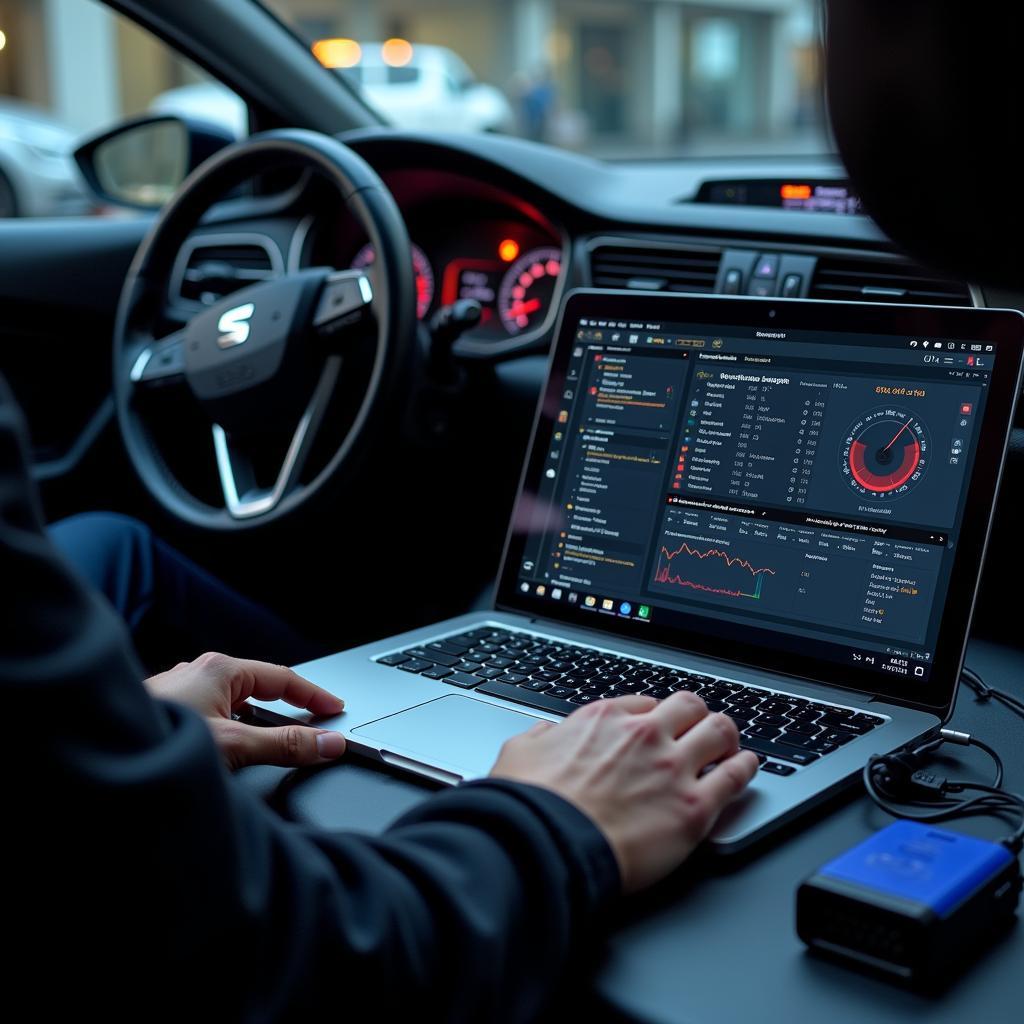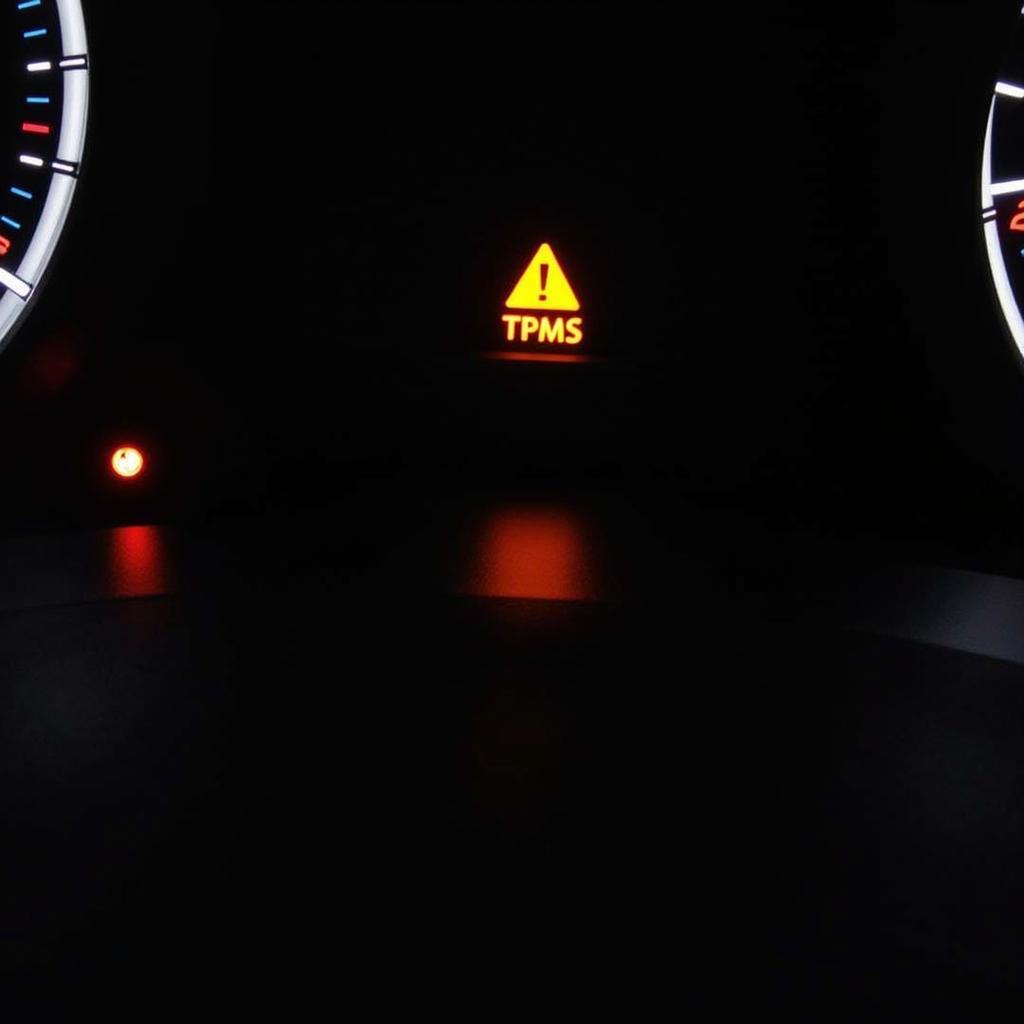The mini brake system warning light, often a yellow or red exclamation mark within a circle, can be a nerve-wracking sight for any driver. This light is your car’s way of communicating a potential issue with your braking system, requiring immediate attention to ensure your safety on the road.
While it’s crucial to consult a qualified mechanic for a thorough diagnosis, understanding the common causes and potential solutions can help you feel more confident and prepared when this warning light illuminates on your dashboard.
Decoding Your Mini’s Brake Warning Light
The mini brake system warning light can signal a range of issues, from minor inconveniences to serious safety concerns. Here’s a breakdown of the most frequent culprits:
1. Low Brake Fluid Level: The Most Common Culprit
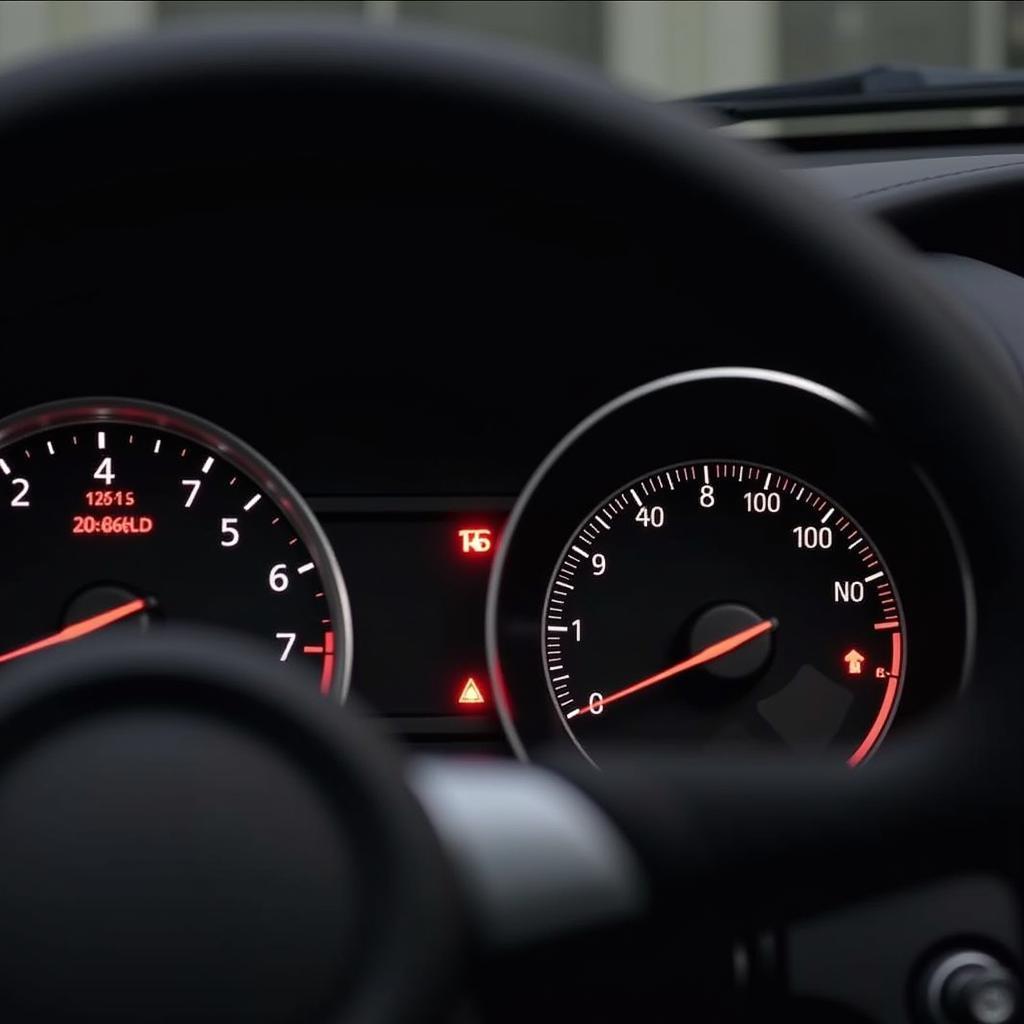 Low Brake Fluid Level Warning
Low Brake Fluid Level Warning
The most common reason for the brake warning light is a low brake fluid level. Brake fluid is the lifeblood of your car’s braking system, responsible for transmitting the force from your foot on the pedal to the brake pads that stop your car. Over time, brake pads wear down, requiring more fluid to operate effectively.
If you suspect low brake fluid is the issue, check your brake fluid reservoir. It’s usually located under the hood, on the driver’s side, and has a translucent container with minimum and maximum level markings. If the fluid level is below the minimum mark, it’s time to top it up with the appropriate brake fluid for your Mini model.
Expert Insight: “Always refer to your car’s owner’s manual for the recommended brake fluid type and topping up procedure. Using the wrong type of brake fluid can damage your braking system,” advises Mark Stevenson, Senior Automotive Engineer at Advance Auto Solutions.
2. Worn-Out Brake Pads: A Sign of Regular Wear and Tear
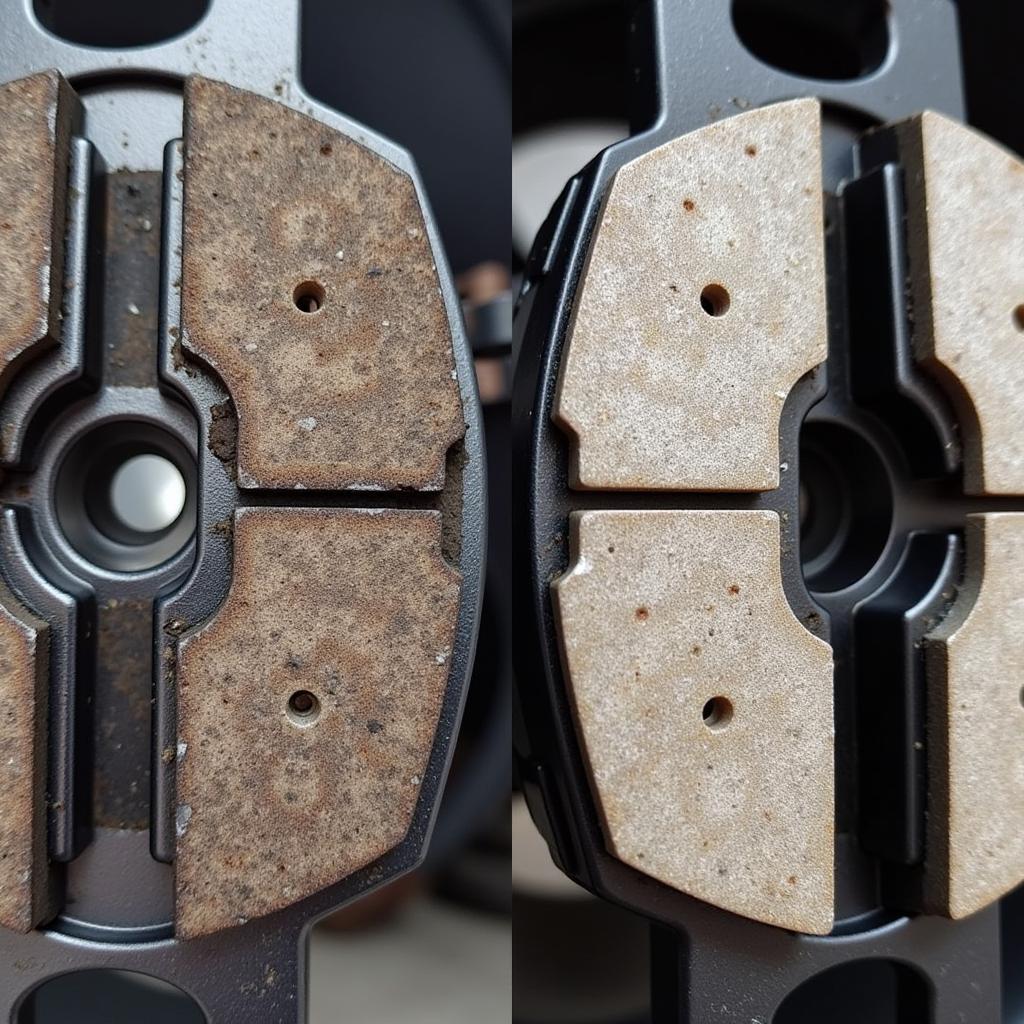 Worn Brake Pads Next to New Brake Pads
Worn Brake Pads Next to New Brake Pads
Brake pads are designed to wear down over time. They create the friction necessary to stop your car, and as they do, they thin out. Most modern vehicles have a built-in sensor within the brake pad assembly that triggers the brake warning light when the pads reach a certain level of wear.
If you hear a squealing or grinding noise when you apply the brakes, it’s another telltale sign of worn brake pads. Driving with worn brake pads not only compromises your braking efficiency but can also damage your brake rotors, leading to more costly repairs.
Expert Tip: “Don’t ignore the squealing – it’s your car telling you it needs attention. Get your brake pads checked and replaced as soon as possible to prevent further damage and ensure safe braking,” recommends Laura Chen, Certified Mechanic and Owner of Chen’s Auto Repair.
3. Malfunctioning ABS System: A More Complex Issue
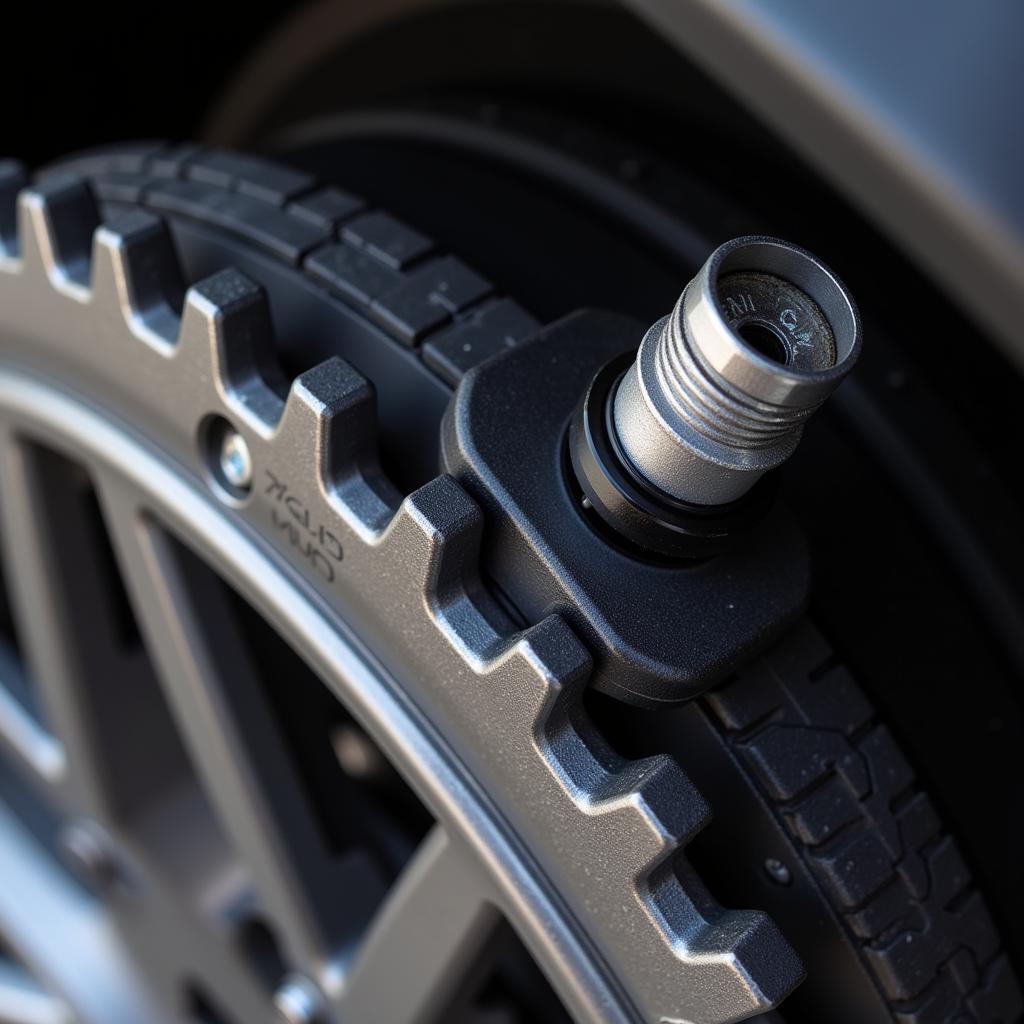 Close-up of an ABS Sensor on a Car Wheel
Close-up of an ABS Sensor on a Car Wheel
While a less common culprit, a malfunctioning Anti-lock Braking System (ABS) can also trigger the brake warning light. The ABS system prevents your wheels from locking up during hard braking, helping you maintain steering control.
A faulty ABS module, damaged wheel speed sensors, or issues within the ABS control unit can disrupt the system’s operation, prompting the warning light. In such cases, you’ll likely see an additional warning light specifically for the ABS.
Diagnosing and repairing ABS problems often requires specialized diagnostic tools and expertise. It’s best to take your Mini to a qualified mechanic for a thorough inspection and repair.
What to Do When the Mini Brake Warning Light Turns On
- Stay Calm and Assess the Situation: Don’t panic! If the warning light comes on while driving, safely pull over to the side of the road and assess the situation.
- Check Your Brake Fluid Level: As mentioned earlier, low brake fluid is the most common reason for the warning light. If the level is low, top it up with the correct type of brake fluid.
- Listen for Unusual Noises: Pay attention to any unusual noises like squealing or grinding when applying the brakes, indicating potential brake pad wear.
- Avoid Driving If Possible: If you suspect a more serious issue or if the brake pedal feels spongy or unresponsive, avoid driving and call for roadside assistance.
- Schedule a Professional Inspection: Even if you’ve topped up the brake fluid or addressed a minor issue, it’s crucial to get your Mini inspected by a qualified mechanic to ensure the braking system is functioning optimally.
Conclusion
The mini brake system warning light should never be ignored. While it can indicate a minor issue like low brake fluid, it can also signal a more serious problem requiring immediate attention. By understanding the common causes and potential solutions, you can approach the situation confidently and prioritize your safety on the road. Remember, when in doubt, always consult a qualified mechanic for a thorough inspection and repair.

